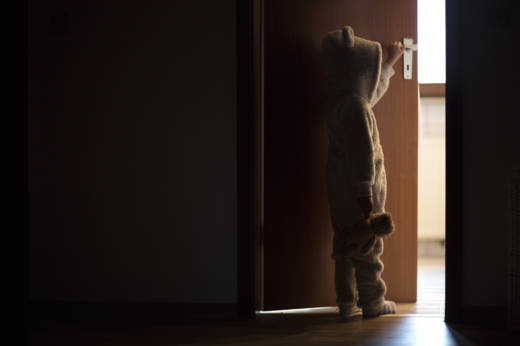Nearly 62 percent of respondents had at least one ACE and a quarter reported three or more. The remaining respondents had at least two ACEs, including 16 percent with four or more such experiences.
Those identifying as black or Latino and those with less than a high school education or an annual income below $15,000 were more likely to have more ACEs. But a relatively new finding was that multiracial and gay, lesbian and bisexual individuals carried the greatest burden.
Multiracial participants reported roughly 2.5 ACEs, and bisexual adults reported 3.1, both the highest scores reported. Women, younger adults, unemployed people and those unable to work also tended to have higher scores.
But Schickedanz cautions that, while the disparities are real, it's important to recognize how common these experiences are among all people, including white and middle class families.
"This [study] shows that ACEs affect people from all walks of life everywhere," he says.
The link between trauma and health
The original ACE study, published in 1998, analyzed data from more than 9,000 primarily middle class adults in the San Diego area, starting in 1995-1997. Its publication opened people's eyes to how common adverse experiences are even among children in seemingly more privileged homes. Nearly 40 percent of participants had at least a college degree, and 75 percent were white.
More than a quarter of those original participants reported physical abuse in childhood, and one in five reported sexual abuse. And the study identified the link between adverse childhood experiences and poor physical and mental health decades later.
Since that study, an increasing number of states have begun collecting data on ACEs with the Behavioral Risk Factor Surveillance System, the database used by the new study's researchers. All states use the system, and 32 states since 2009 have collected ACEs data.
The CDC tracks the many ACE-related studies published on a website section specifically about ACEs. Studies have linked a greater number of ACEs with greater risk of heart disease, cancer, bone fractures and chronic lung or liver diseases, diabetes and stroke. Those with the most ACEs, four to six or more, tend to have higher rates of mental illness.
Scientists have just begun understanding the social and biological mechanisms that might explain how highly stressful experiences in childhood could translate to greater risks for heart disease or diabetes. One way has to do with the stress response itself: the body produces and releases the hormones cortisol and adrenaline while increasing blood sugar and blood pressure — all of which help with the body's need for fight or flight.
But chronic stress means chronically high levels of these substances, which isn't healthy in the long term. Consistently high blood sugar, for example, increases the risk of diabetes, and high blood pressure is linked to heart disease.
Opportunities for intervention
This new study suggests a need to target prevention resources where they can help most, says Jack Shonkoff, a professor of child health and development at the Harvard T.H. Chan School of Public Health. This also requires identifying what makes some people more susceptible than others to the effects of adversity.
"Nobody is immune to adverse experiences in childhood but for some population groups, they're a larger burden of childhood adversity than others," he says. "We need to focus on targeting limited resources to the people at greatest risk and making sure those resources go into programs that reduce or mitigate adversity."
Doing that will require developing tools to screen for people's sensitivity to adversity, he says. He also notes that ACEs alone don't account for health disparities. Genetics play a key role in health outcomes as well, he explains.
"Environmental risk factors are only part of the story. You can't separate genetics from environment," Shonkoff says.
To address the consequences of childhood adversity, it will be important to develop programs that help children learn healthy coping mechanisms and strengthen families and communities overall, says Andrew Garner, a clinical professor of pediatrics at Case Western Reserve University School of Medicine in Cleveland.
"Our objective is not to put kids in a bubble but teach kids how to deal with adversity in a healthy manner," Garner says. "If parents are in survival mode, their kids are in survival mode too, and they're not going to learn as well and learn coping mechanisms. Those poor coping mechanisms are what we think links adversity to poor health outcomes."
For example, youth who cope by using drugs, alcohol, sex or other risky behaviors are increasing their risk of substance abuse problems, teen pregnancy and sexually transmitted infections, all of which increase risk of other chronic diseases later on.
Garner and Schickedanz both pointed to increasing levels of social isolation documented by other researchers as a substantial likely contributor to the health outcomes linked to ACEs.
"If you look the very highest risk group, it's bisexuals, and we know they may feel isolated. The second highest is multiracial people who may not necessary feel they belong in any particular group," Garner says. "We know from biology that it's really bad to be socially isolated and we're seeing that disparities in adversity are mirrored in health outcomes later on."
But Garner emphasizes that an ACE score is "not destiny." In addition to social programs that address underlying income and racial disparities, it's vital to teach kids resilience.
"Resilience reflects using skills, and the beauty of that is that skills can be learned, taught, modeled, practiced and reinforced, and kids learn better when they're in relationships," he says. "We need to do better job of primary prevention by focusing on emotional learning and promoting safe, stable, nurturing relationships."



9(MDAxOTAwOTE4MDEyMTkxMDAzNjczZDljZA004))